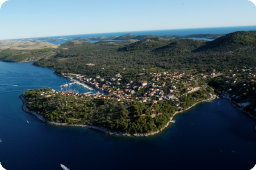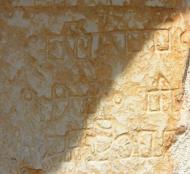

Sali/Dugi Otok
Sali/Dugi Otok  History of Sali
History of Sali
The place was named after the salt pans that used to be here. It was mentioned by this name for the first time in 1105.  The parish church of the Assumption of Mary was built on the site of an early mediaeval church (remains of fragments with interlaced ornamentation have been found). The entrance with its Gothic vault was built by Master Juraj Lukačević in 1465. The altar was built in 1584 (there is a Glagolitic inscription above the door). The impressive main altar (17th century) features a Baroque altarpiece with a subsequently attached early Renaissance representation of Our Lady with Child, attributed to Juraj Čulinović, from the 15th century. Originally it was part of a polyptych. The Dead Christ, to the right of the altar, also belonged to it. The church of St. Roche was first mentioned in 1644 and was extended in 1855. As far as Residential architecture is concerned, there are several interesting buildings: the Rančić house, built in the Renaissance style, two other Renaissance houses (formerly owned by the Gverinis) with the remains of a large park, and the Baroque Petricioli house from the 17th century.
The parish church of the Assumption of Mary was built on the site of an early mediaeval church (remains of fragments with interlaced ornamentation have been found). The entrance with its Gothic vault was built by Master Juraj Lukačević in 1465. The altar was built in 1584 (there is a Glagolitic inscription above the door). The impressive main altar (17th century) features a Baroque altarpiece with a subsequently attached early Renaissance representation of Our Lady with Child, attributed to Juraj Čulinović, from the 15th century. Originally it was part of a polyptych. The Dead Christ, to the right of the altar, also belonged to it. The church of St. Roche was first mentioned in 1644 and was extended in 1855. As far as Residential architecture is concerned, there are several interesting buildings: the Rančić house, built in the Renaissance style, two other Renaissance houses (formerly owned by the Gverinis) with the remains of a large park, and the Baroque Petricioli house from the 17th century.
Sources:
www.culturenet.hr
Video
Current news
 Macrocruise charter agency
Additional discount on the boat rental price of betw
Macrocruise charter agency
Additional discount on the boat rental price of betw



























